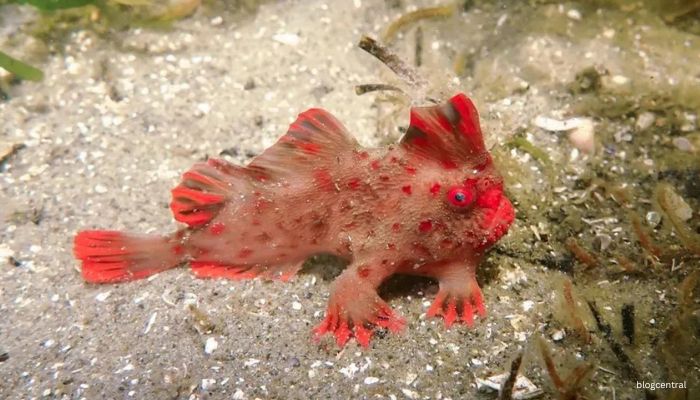The red handfish if observed is a very small fish that has hand-like fins and a grumpy-looking frown on its face and also sports a mohawk.
Basically, this inverse anglerfish reaches the size of four inches in length and is available in red/brown/pink shades and the fins are highlighted by bright edges. Every red handfish has its own patterns that can be used to differentiate one from another.
Red handfish, as you will discover, do not have swim bladders indispensable in buoyancy among several types of fish. However, to move on the bottom it waves its ‘hands’ which are its pectoral fins enlarged during the evolution process. “It is quite an interesting case of adaptability,” notes Andrew Trotter, who directs the preservation of red handfish at the University of Tasmania’s Institute for Marine and Antarctic Studies or IMAS. “While it is rather unusual to see fish walking on fins, some fish do it on the ground: the absence of a swim bladder is characteristic for bottom fish since they do not require precise buoyancy control. ”
Despite their peculiar appearance, some people are cute and adorable. An additional component Trotter includes, ‘They’re definitely a bit cute’ feels a bit too cutesy, however, considering they’re discussing chocolate/ cocoa beans.
There is only a critically endangered type known as red handfish, and it is only located in two reefs in Tasmania, Australia. They cannot swim very far using their hand-like limbs and thus threats like habitat inhibition, water pollution, and encroaching urbanization pose a high risk to the species.
“Currently, so few of these fish are around that they are ranked among the scarcest in the globe,” says Trotter. Scientists currently relocated 25 out of the 100 known wild red handfish and placed them in captivity to shield them from the catastrophizing marine heatwaves that may extinguish the species.
Trotter who had the responsibility of looking after the captured Fish stated that the fish had an attitude, which he described as an indication of attitude Some fish had different personalities Hence rewarding but stressful, they lost three fish to captivity. The remaining 18 were freed in the wild once the situation could support their survival, while the final four were kept in the IMAS breeding facility to guarantee the species’ continuity.
Consequently, the future of the red handfish is rather indefinite. As you may surmise, with such low population numbers, any sort of mishap can lead to the species’ extinction as Trotter notes.
